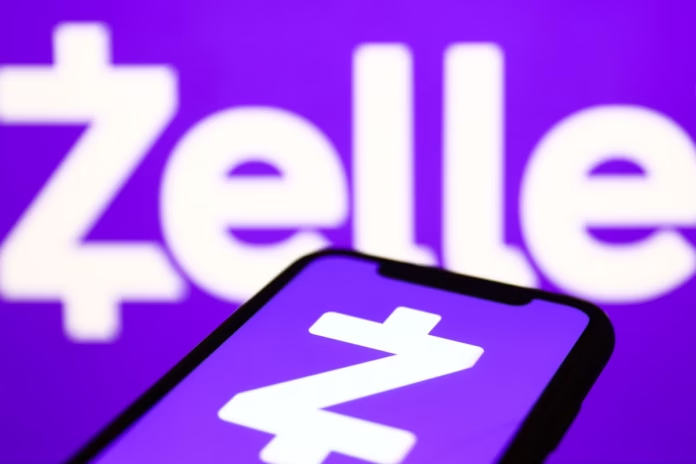Zelle, the popular peer-to-peer payment service, had a major breakdown on Friday, May 2, 2025, as customers of a number of banks discovered that they could not send or receive funds. The outage sparked a chain of complaints and confusion as consumers asked themselves what became of their money.
Payment Problems Surface Early Friday
As reported by DownDetector, issues of payment failures with Zelle started coming in on Friday morning. Customers nationwide complained of failed transactions, pending payments, and frustration about not knowing where their money went.
Zelle later acknowledged the disruption in a statement, blaming the outage on a third-party glitch. The firm pointed fingers at Fiserv, one of the leading providers of banking technology, as the culprit.
Fiserv Blames Internal Issue
A Fiserv representative acknowledged the problem, saying that the company had an internal technical issue that impacted payment processing for multiple banks. The representative explained that this was not a cyber attack or some kind of malicious activity.
“Earlier today, we had an internal issue that momentarily disrupted service,” Fiserv said to CNN. “The problem has been resolved, and we are now working to clear the backlog.”
Backlog and “Payment Pending” Notifications
Although the matter was resolved late in the afternoon, Zelle explained that most users will continue to view transactions as “payment pending.” The company added that it is working with partner banks to process the delayed payments in full and return to normal processing.
The episode gave headaches to those who use Zelle for timely payments like rent, bills, or shared expenses.
One of the frustrated Truist customers reported their rent payment being stuck in the system since Thursday evening. “I feel like my money is suspended and nobody will do anything or take any blame!” they bemoaned on DownDetector.
A number of Banks Affected
Zelle has not identified the banks that were affected by the outage. But according to the reports from users and statements from banks, three banks were included. And, these banks are customers of Truist, Navy Federal Credit Union, and Bank of America.
Bank of America spokesperson Matthew Card described the problem as “vendor-related” and affecting several financial institutions. “Certain clients had a delay sending and receiving certain payments,” Card verified.
Most banks, upon being called, redirected callers to Zelle for assistance and status, contributing to upset customers already worried about lost money.
A Refresher on System Weaknesses
This experience pinpoints the weakness of current digital payment platforms using third-party vendor networks. In the case of Zelle, the company belongs to Early Warning Services (EWS), and EWS in turn is owned jointly by American major banks, including JPMorgan Chase, Wells Fargo, and Bank of America.
Zelle handles billions of dollars a day, sometimes in real time. So even hours of outages can have a ripple effect throughout the financial system. With millions depending on Zelle to send money fast and easy, any disruption feels highly personal.
Looking Ahead: Fixes and Accountability
Fiserv said it is currently prioritizing clearing the payment backlog and preventing the same issue from happening again. “We are taking steps to avoid a similar problem in the future,” the company said.
Zelle also vowed to make continuous efforts with its bank partners and technology vendors to strengthen the platform. Meanwhile, customers are requested to double-check their transaction status and look out for communications from their banks.
Users Affected by the Technical Outage
Zelle has maintained a vast network with the 2,200 banks and credit unions that demand integration from their server. Moreover, the network connects with approximately 151 million customers who initiate even minimal transactions through this payment gateway.
While the reasons for the Outage are not clear, the unresponsive reports of the customers show the interdependence of payments through this platform. Furthermore, Zelle is interlinked with the bank services, as its independent app was deactivated in April after its collaboration. Customers who are using Zelle as their primary medium of payment must not stop buzzing the banks for a solution.
Complaints registered for Stuck Payments
Many users complained through their bank’s customer service about the unresponsive payment status, which didn’t transfer because of the outage. While the banks are trying to reach out to Zelle’s payment server, customers can address their grievances after a series of steps.
Before they contact the bank for their pending payment status, they should always cross-check the updates on the app. The payment status can be identified by the statement ‘Pending’ or ‘Failure’, which determines if you should contact the bank. If the status shows ‘Pending’, contact the bank support immediately, so that they can release your payment with first priority.
Additionally, it will be beneficial to them if they take a screenshot of the transaction status and form a document. This is crucial as it provides you with a supportive document in case the bank demands proof. Furthermore, you just need to wait for the bank to update the status and check your account for any information.
Alternatives to complete your Payment requirements
Many customers use only the payment server of Zelle in the Bank apps to fulfill their fund requirements. However, the Zelle technical outage has given an important lesson to users, which they should apply in their lives. They are advised by the banks to use several other digital payment apps, alongside Zelle, to avoid difficulties in the future. Moreover, they can use Apple Pay, Cash App, Venmo, and PayPal to transfer funds on an urgent basis.
Additionally, having several backup options is always beneficial for users to avoid issues due to possible server issues.
Final Thoughts
Friday’s Zelle outage brought back to our attention that even the most secure digital payment means are not immune to bugs. Although the bug might now be fixed, the frustration and financial hardship caused to a majority of the users will be long remembered.
With digital finance increasing, the demand for transparency, stability, and customer care also increases, especially when money vanishes in thin air.








